Rating index:
Extraordinary (96-100)
Outstanding (93-95)
Very good to Excellent (89-92)
Above average to Good (86-88)
Below Average to Average (80-85)
Avoid (below 80)
More info >
Extraordinary (96-100)
Outstanding (93-95)
Very good to Excellent (89-92)
Above average to Good (86-88)
Below Average to Average (80-85)
Avoid (below 80)
More info >
Dranouter in Belgium is a small village with some 700 inhabitants in the fields of Flanders, just southwest of Ypres at less than 1 mile from the French border. It would perhaps be slightly uncharitable to say that it is in the middle of nowhere, but it is certainly a peaceful place. It is peaceful now; almost a century ago it was in Flanders Fields, just a few miles behind the front line of the Great War, where "Passchendaele" became a byword for human suffering, bravery, epic destruction and almost inconceivable loss of life.
At first glance, you might think that the number of potential reasons why Dranouter might spring into international prominence, would probably be limited. Admittedly it enjoys some notoriety for its annual folk festival, but it is probably chef Kobe Desramaults' restaurant In De Wulf, which "is now among the world's most noted destination restaurants" (Eater.com, March 11, 2013), that is currently Dranouter's main claim to fame.
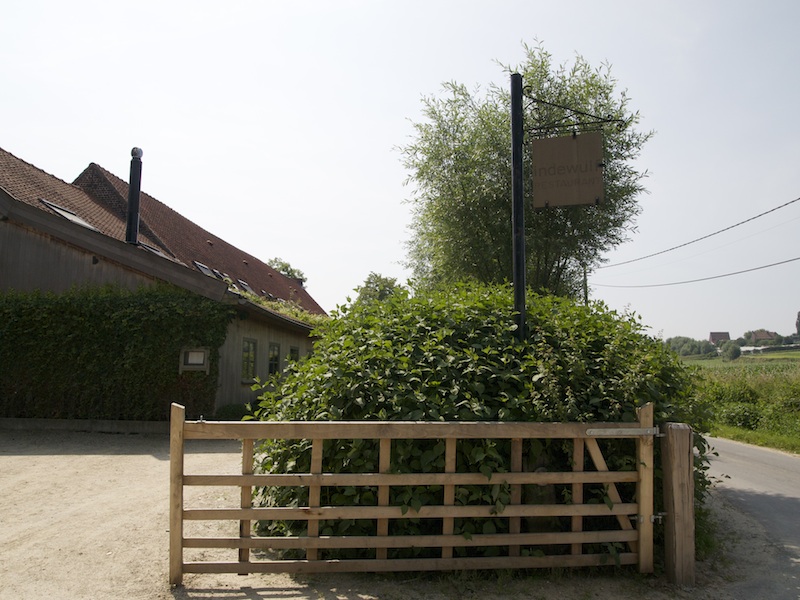
From a culinary perspective, the area is rich however. Passendale cheese is a major brand in the Belgian and international markets. The Westvleteren monastery is one of only eight cistercian monasteries in the world to produce its own beer within its own walls - unlike that of relative giants like Westmalle, La Trappe and Chimay however, it is only available at the cellar door and at Herberg De Vrede opposite. Not necessarily ingredients perhaps that feature in Kobe Desramaults' local larder, but it is certainly well stocked. In the recent book "De chefs van België' ("The Chefs of Belgium"), he quotes pork from Borre, pigeon from Steenvoorde, lamb from Lo Reninge, dune asparagus from Ghyvelde, rare breed beef from Westouter, vegetables, fruit and wild herbs from Dranouter and wine from nearby vineyards as ingredients he works with.
Kobe Desramaults (b. 1980) was an unruly teenager and when he was 18, his mother sent him to work at a local restaurant called "Picasso" as a last resort. He liked what he was doing and subsequently spent two years at Oud Sluis (two Michelin stars at the time) and 10 months at Comerç 24 in Barcelona. In 2003, only 23 years old, he came back home and took over the restaurant, a French bistro, that his parents had started in 1979. He managed to overcome the existing financial difficulties and in 2005 Michelin awarded the restaurant its star - the chef was only 25 at the time.
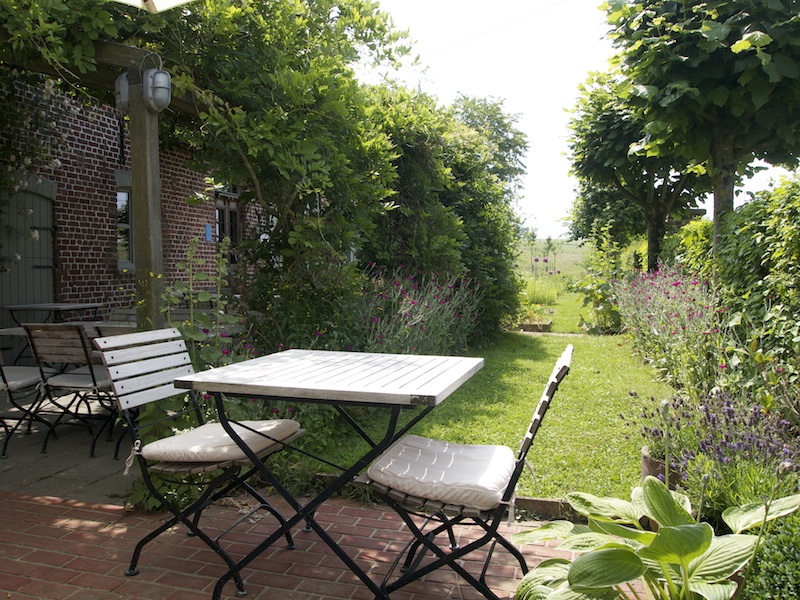
It wasn't until 2007 however, after a number of visits to Michel Bras and Alain Passard, when Kobe Desramaults found his true vocation and inspiration: to work with the products of the local farmers and to go in search of their gastronomic essence. It took him a while to build up a community with these "Flamands taiseux et sages" (to quote Jacques Brel), but he has done so successfully and the "Local Food Express" now delivers the produce of 20 local farmers to restaurants all the way to Ghent.
Sounds a bit like foraging, you ask? You would not be completely wrong - Desramaults lists "The foraging handbook" by Miles Irving as his favourite culinary publication. He is not content with merely finding the ingredient however or even with finding its essence; he wants his dishes to work, to have a logic to them, with flavours that do not antagonise the palate. As you can imagine, In De Wulf is a place I really wanted to visit and I did so on Sunday 14 July 2013, when my husband and I had lunch there.
In De Wulf is open for dinner Wednesday till Sunday and for lunch on Thursday, Friday and Sunday. The restaurant offers a multiple-course tasting menu for €125 (€205 including matching wines). There's also a short version of the tasting menu for €105 (€165 including matching wines).
We kicked off our lunch with seven appetisers. First to arrive were delicious, crispy 'pork crackers' dusted with vinegar powder and crispy onion 'sheets' with wonderful, smokey, caramelised onion flavours, served with a creamy mustard dip. A nice and sticky beetroot crisp with a yoghurt filling was served next, followed by a bite of pickled carrot topped with an intense fermented carrot puree and crispy puffed bread with a fennel cream filling, dusted with dried wild boar ham. Finally a crispy potato nest, with a potato mousseline that had a hint of cheese, and some lovely fresh and tender whelks served with a very flavoursome onion and bay leaf vinaigrette for dipping.
These were seven exceptional appetisers with exciting flavours and textures. I was especially impressed by the puffed bread with fennel and ham.
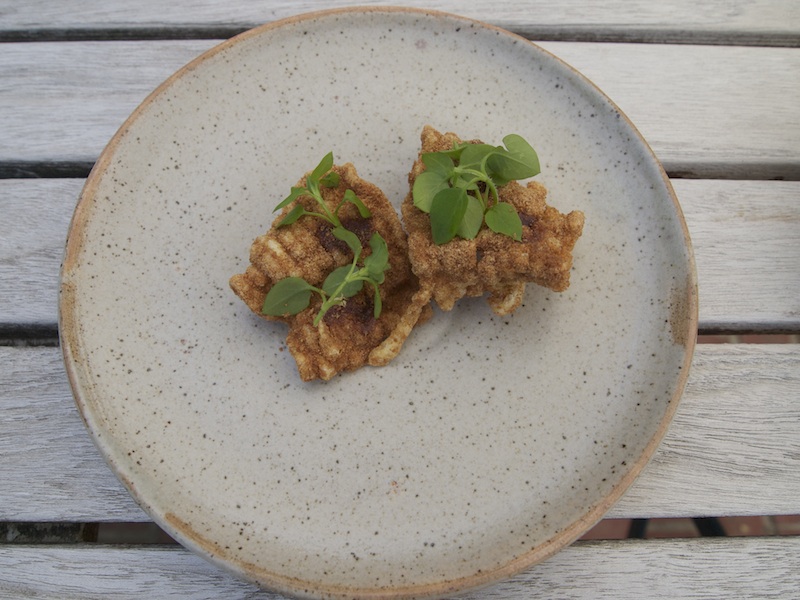





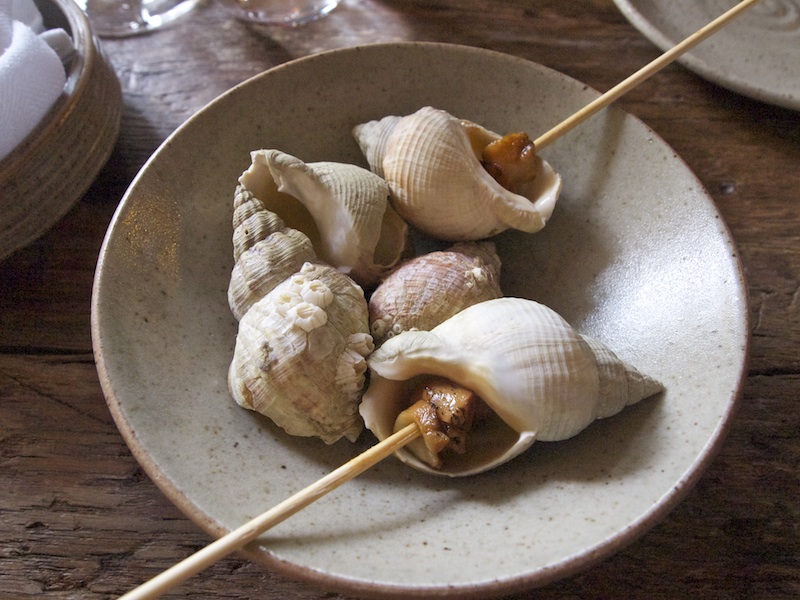

Home baked sourdough served with butter and rapeseed oil.
Shortly after this excellent start, the first course of the tasting menu arrived. A lovely firm but moist piece of dogfish escabeche (cooked in an acidic marinade), topped with a thin slice of tart rhubarb, some fabulous silky-soft lardo and a few radish flowers. It was served with a terrific, pure and concentrated lovage sauce. An elegant dish with balanced and clean flavours, the lardo adding a perfect touch of luxury.
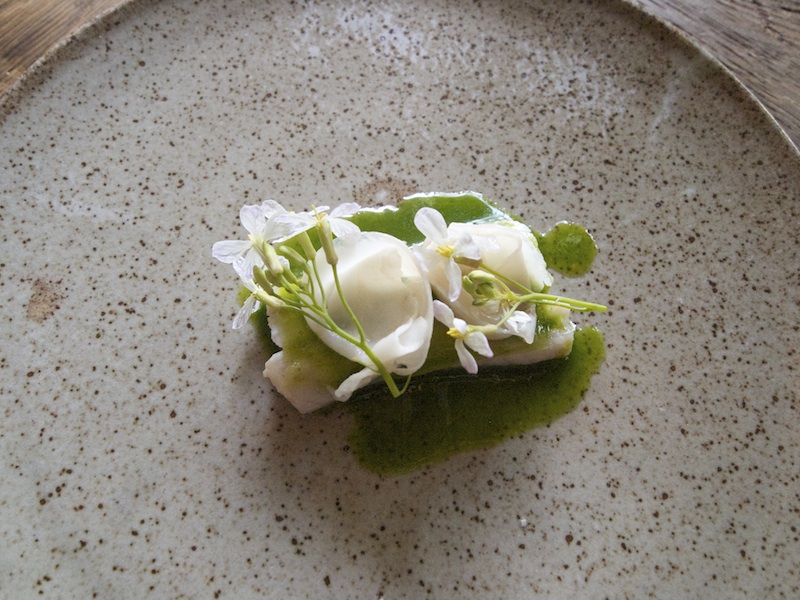
Next up was a beautifully presented dish of heather smoked mackerel, which was wonderfully moist in the middle and had lovely subtle smokey flavours. The grated lime zest sprinkled on top, delivered a hint of sweetness and sharpness.
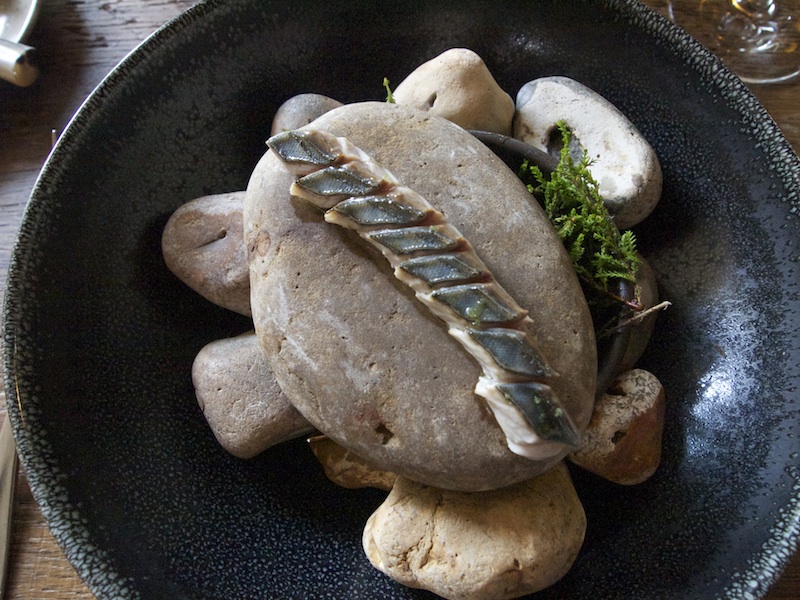
Third course was a selection of lovely crunchy herbs and leaves (freshly picked that same morning) wrapped in a thin sheet of kohlrabi and served with homemade sour cream and tarragon salt. The herbs and leaves combined nicely with the sour cream; the tarragon salt gave it a nice kick. Unfortunately I forgot to take a photograph of this lovely dish.
Clams, Belgian white (witbier) and mussel foam, kale seed pods and fermented leek juice arrived next. Perfectly cooked juicy clams and the Belgian white and mussel foam was beautifully flavoured and complemented the clam flavours. The kale seed pods were incredibly crunchy and had a lovely elegant pea-like flavour. Also on the plate were the clam cooking juices, dotted with fermented leek juice, the latter providing a wonderful aftertaste. A superb dish with clean, well-defined flavours and the clam juices and foam delivered a wonderful warm finish.
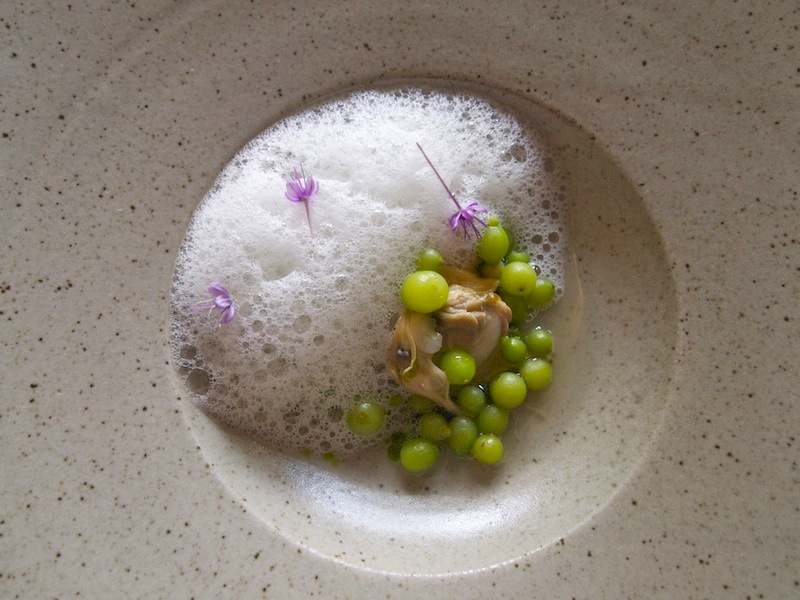
On to the fifth course, Skate, split pea miso and shredded mange tout. Superb, skillfully cooked skate, tender and moist on the inside and beautifully caramelised on the outside, served with a delicious rich and creamy sauce. But best of all was the shredded mange tout mixed with a sweet and salty pea miso. An exceptionally creative dish with a beautiful balance between rich and intense flavours; an umami feast for the taste buds.
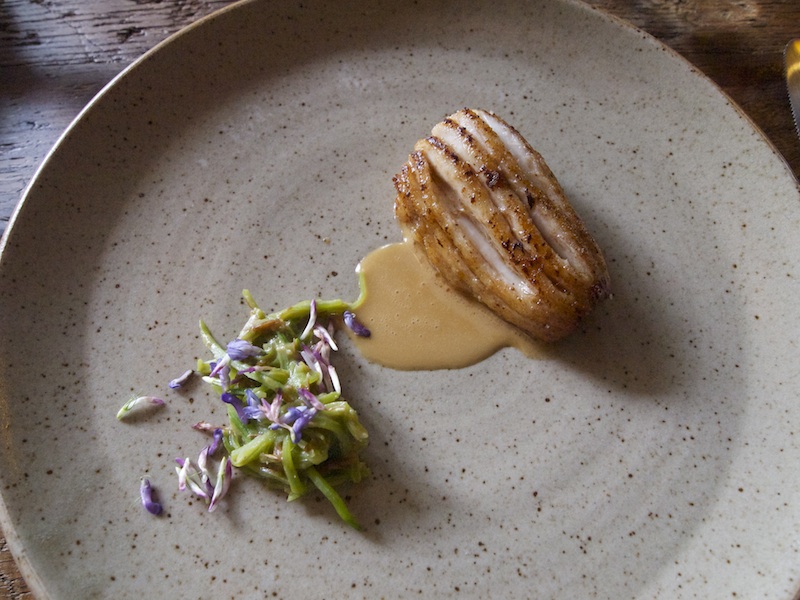
Sixth course, Snails from Comines with young garlic. Tender snails served with garlic custard and roasted young garlic. The custard was nice and creamy and had lovely roasted garlic flavours. Loved the roasted young garlic: good intense flavours without being overpowering and nice bitters too. Also on the plate were some wild garlic capers that added a nice touch of acidity. A beautifully balanced dish with a lovely long aftertaste. A fantastic and original take on the classic snails and garlic combination.
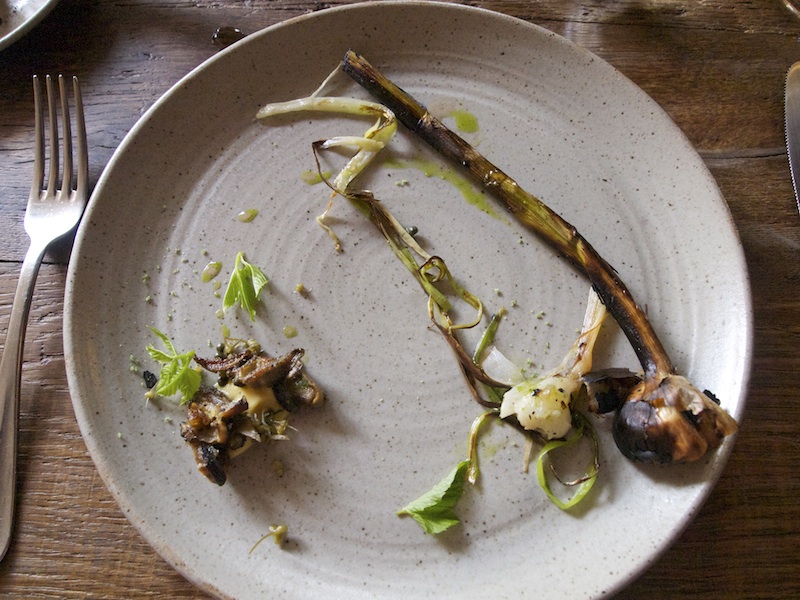
The snails were followed by a delicate dish of freshly picked Northsea crab meat served with broad beans, finely chopped sea arrowgrass and nettle vinegar. The broad bean pods had been used to make a wonderful creamy sauce. A lovely and harmonious dish with a nice touch of freshness from the nettle vinegar.

Eighth course was Oosterschelde lobster with 'kerremelkstampers'. Sweet and tender lobster cooked in herb oil, served with a fantastic jus made from lobster heads and buttermilk and garnished with a few radish flowers. Best of all were the 'kerremelkstampers', spoonfuls of deliciously creamy and light potato mousseline made with buttermilk in stead of plain milk. Kerremelk is Flemish for buttermilk. A beautifully balanced dish with impeccable flavours, the buttermilk providing the perfect touch of freshness.

Egg yolk and spring onions followed. At the bottom of the plate was an egg yolk that had been frozen before it was slowly cooked, giving the yolk a firmer but still soft texture. On top of the yolk were spring onions and a light egg yolk emulsion. Finally a generous sprinkling of dried and then deep-fried salty seaweed that seasoned the dish perfectly. The saltiness of the seaweed really brought out the best from the egg yolk. A wonderfully comforting dish with lovely rich flavours, an excellent liaison to the next two meat courses.
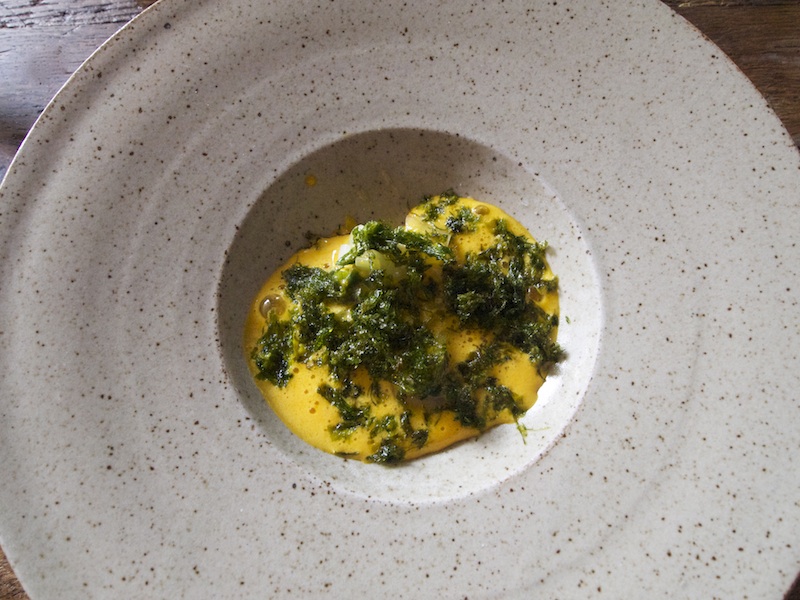
First up was beautifully cooked, pink and tender lamb served with a selection of sea leaves and vegetables from the Ambleuteuse (on the French coast) such as samphire and sea lavender. One of the sea vegetables was lightly charred, which added depth and nice bitters. With the lamb came a creamy and foamy goat's whey sauce. A lovely dish but the lamb, although visibly seasoned with salt, lacked some flavour. Loved the combination of lamb with salty sea vegetables though.

This was followed by a gloriously rich dish of homemade blood sausage served with a dark jus, crispy pig's trotter and smoked beetroot. Beautiful intense flavours, balanced nicely by the beetroot. Loved the elegant presentation.
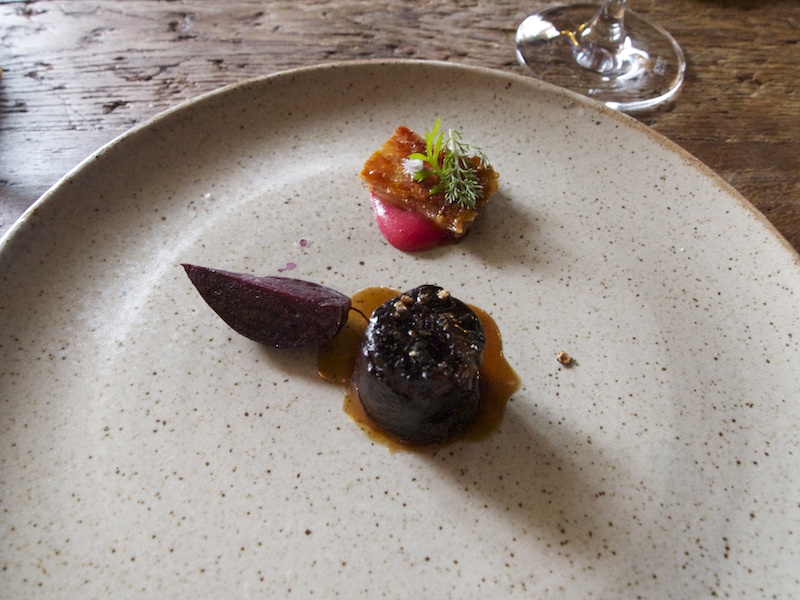
On to the twelfth course, cheese. A simple but brilliant dish of creamy but pungent Saint Romain cheese crème mixed with sourdough and Belgian white, served with whey and leek oil and some lightly toasted rye bread. Wonderful, pure leek flavours and the rye bread had a lovely buttery taste to it.

Thirteenth course and first of three desserts, was a deliciously refreshing dessert of woodruff granita, elegant sorrel cream and lovely tart green (unripe) strawberries.

Second dessert was a beautifully made, light and crunchy meringue filled with a meadowsweet crème, served with a drizzle of fresh forest honey (mixed with some elderflower vinegar) and sprinkled with meadowsweet flowers. A delightful dessert with wonderfully floral flavours.
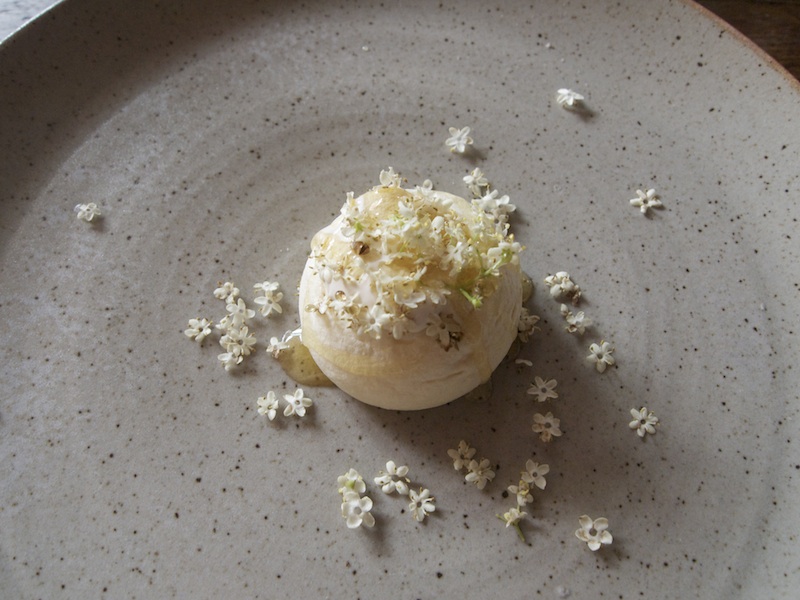
Fifteenth course and final dessert was fresh goat's milk ice cream accompanied by a wonderfully pure and aromatic dill juice, some milk crispies and young cucumber. An elegant dessert with lovely fresh and savoury flavours.
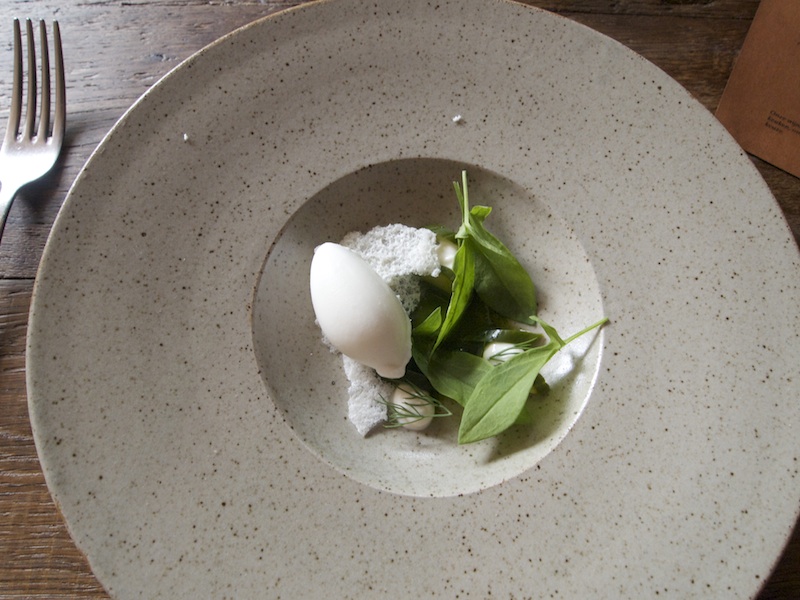
Last to arrive were buttery pastry cups with a goat's yoghurt cream filling, rhubarb jellies, chocolates with butterscotch and Nutella, fresh strawberries, malt cakes and 'oliebollen'.
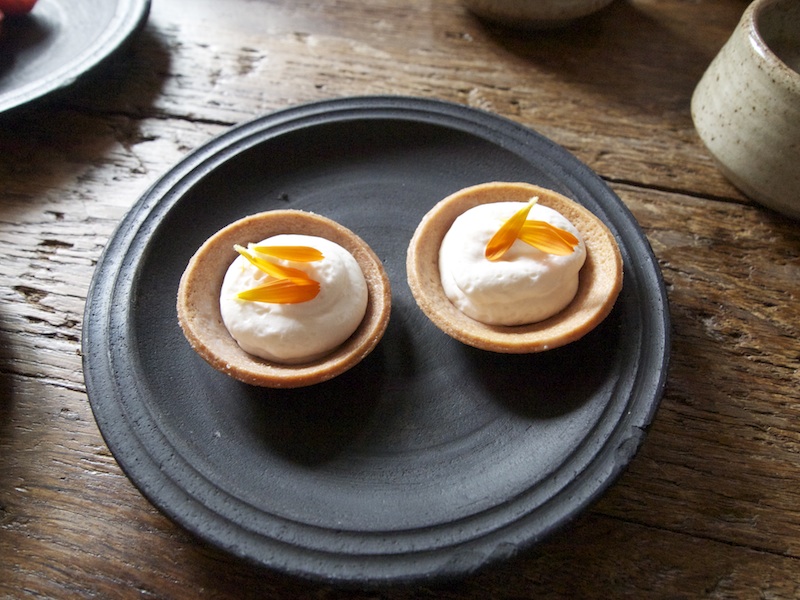
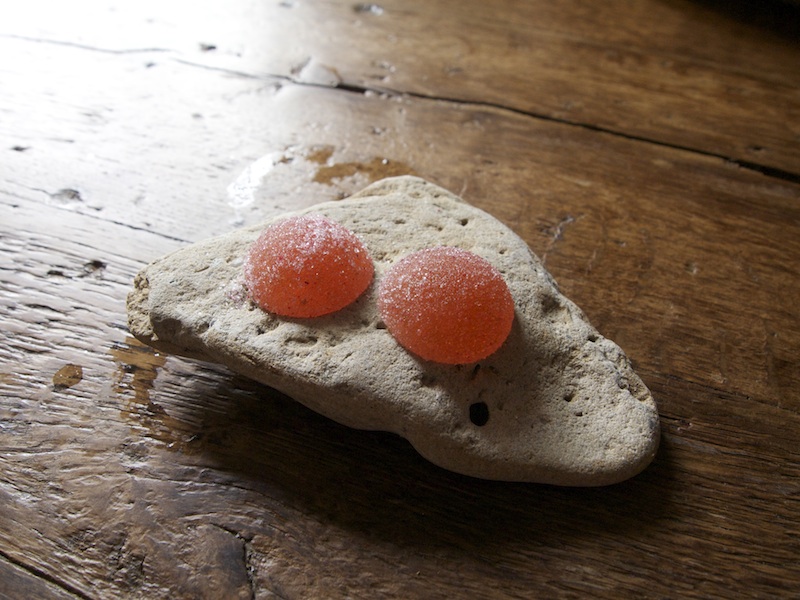


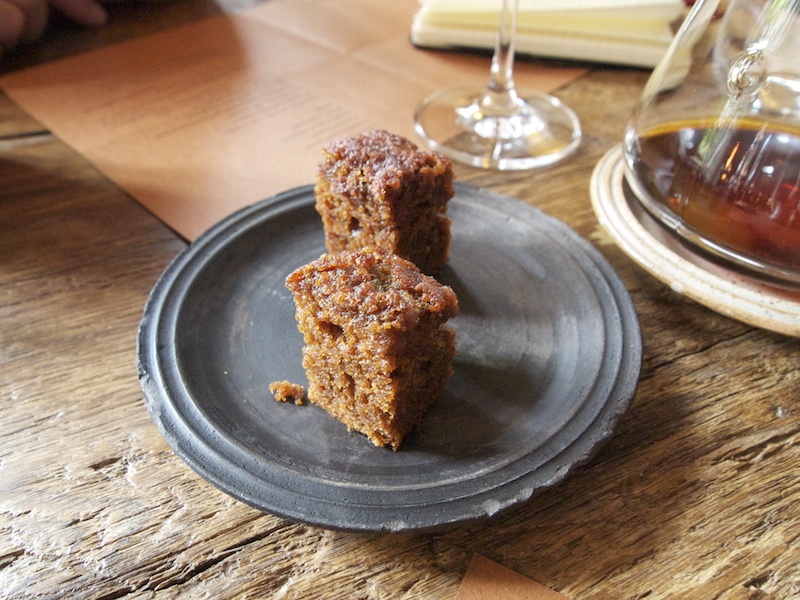
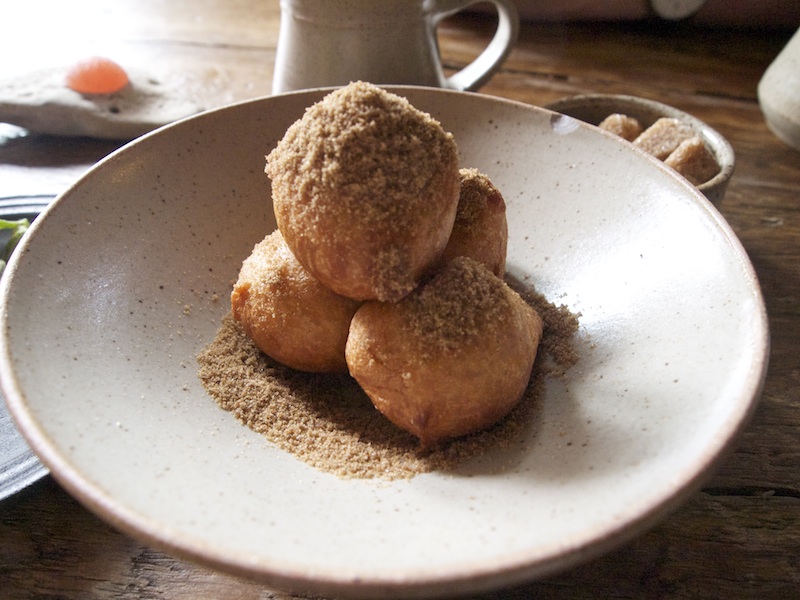
In De Wulf is a restaurant that has made quite a name for itself in the last couple of years. Kobe Desramaults is well-known for his participation in food festivals like Flemish Primitives and Cook It Raw. Some might say that the restaurant has achieved a bit of a cult status. I therefore came here with high expectations but also with a healthy dose of scepticism. You must forgive me, but I get like that when people tell me that some one-starred restaurant in the outback of Belgium is the best thing to have happened in food since the discovery of the Maillard effect. The foraging theme was not really a reassurance either; plucking weeds in your back yard is fine, but the chef who can turn them into great food is one of a very rare breed. Kobe Desramaults is one of those few chefs. Emphatically so.
His food may seem uncomplicated, but that is exactly the impression it wants to give and every ingredient and element on the plate is sourced and prepared with utmost care and skill. This is wonderfully inspired, unpretentious, very digestible and ever so precise food from a chef who perfectly understands his ingredients and for whom flavour is paramount. Using 'en vogue' ingredients, he delivers bright and clean flavours and he usually achieves his stated goal of capturing the essence of at least one ingredient in every dish. Technically, this was a flawless meal and the span of gastronomic control which the team at In De Wulf showcases was quite impressive. From a logistic perspective this was a stellar performance too; 15 perfectly cooked courses plus 7 appetisers in just under three hours is no mean feat. In De Wulf lives up to its billing and is well worth a detour.













